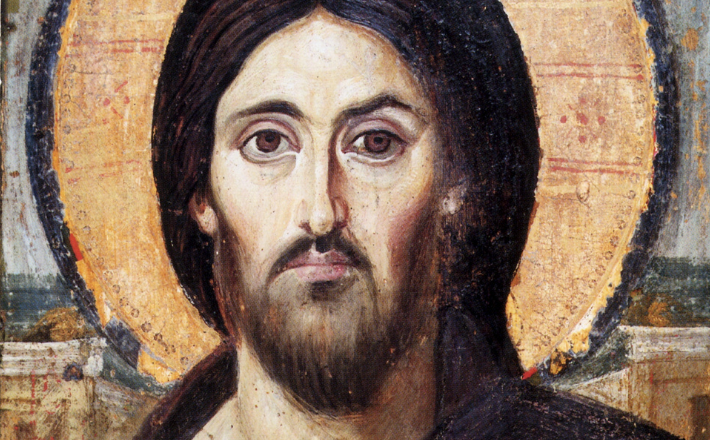Commentary on John 10:22-30
The author of John is skilled at weaving layers of themes into the Gospel’s stories. In order to tease out these layers, it is important for interpreters to keep the big-picture view of the literary structure in mind. Fortunately, this passage gives us clues as to how it fits into the big picture. Verse 22 announces that the setting for this passage is during the Festival of Dedication. If you have been paying attention to the setting thus far, you will notice that this is the fourth episode that revolves around Jewish festivals and Jesus’ identity.
First, in John 5, Jesus heals a man on the Sabbath and connects God’s ceaseless work with the work Jesus does even on the day of rest. Then, in John 6, Jesus becomes the bread of life, the true manna from heaven, as he feeds the crowds during the festival of Passover. John 7:1–10:21 takes place during the festival of Tabernacles, and John compares Jesus to the water and light involved in the temple rituals, calling on imagery from the exodus that ensured God’s presence with the people.
And then we have our passage in John 10:22–30 (part of the larger 10:22–39), which takes place during the Festival of Dedication, or Hanukkah, that holiday celebrating the rededication of the temple in 164 BCE. This passage completes the festival theme by presenting Jesus as one who, like the heroes of Hanukkah, might renew Israel and redeem them from their oppression.1
But that’s not the only theme playing out here. John also continues the theme of Jesus’ identity, offering some divine imagery for Jesus: as a shepherd, and as someone who is one with the Father. Scholars consider the shepherd allusions here, which carry over from the Good Shepherd discourse in 10:1–18, to be divine imagery from the Old Testament. Throughout the Psalms, we read about God as the shepherd of Israel and Israel as sheep, and the extended metaphor as it appears in John 10 has strong parallels with Ezekiel 34.
Another Johannine theme that finds expression in this passage is that of testifying or being a witness (marturia). Beginning with the prologue of the Gospel, John places importance on the idea of giving witness to the truth of who Jesus is.
First, John the Baptist testifies to the light of the Word (1:7), and later in John 5:39, the Scriptures serve as a witness to Jesus. Jesus bears witness to himself in 8:14, and God the Father testifies to Jesus’ identity in 8:18. When Jesus speaks about the Paraclete in John 15, he says the Advocate or Spirit will be a witness when Jesus sends it (verse 26), and the disciples will also testify (verse 27). Others who follow Jesus witness about him, although the word marturia does not always appear in these passages. The Samaritan woman witnesses about Jesus to her village (4:29), and the man born blind testifies to what Jesus did for him (9:25).
Our passage falls right in the middle of these important witnesses and shows the readers that Jesus’ own works done in the name of the Father bear witness to him.
Another Johannine theme woven into this brief passage is belonging. John makes use of dualistic themes throughout his Gospel—light and dark, life and death, flesh and spirit, from above and from below or “of the world.” The contrast that appears in the Shepherd-and-sheep metaphor follows in line with this last one: those who belong to Jesus’ sheep and those who don’t (10:26). Those who belong to Jesus hear his voice and follow him; they will not be snatched out of Jesus’ hand or the hand of the Father. It’s comforting and beautiful imagery, and it pops up throughout the rest of the Gospel in subtle ways. When Jesus calls Mary’s name at the tomb, she hears him and finally recognizes him (20:16), and in the epilogue of the Gospel, Jesus encourages Peter not only to feed his sheep but to follow him (21:15–23).
The final theme John has masterfully stitched into this passage is the most identifiable of the Gospel and the most misinterpreted. When Jesus says of his sheep, “I give them eternal life, and they will never perish” (10:28), he is elaborating on the theme of life and eternal life that saturates John. Folks in the pews may imagine that the opposing concepts here—eternal life and perishing—refer to heaven and hell, but that is an anachronistic interpretation. In the first century, hearers of the Gospel did not have developed concepts of heaven and hell (as places where people go when they die). Instead, they would more likely think of “perishing” as the present, evil age they lived in and “eternal life” as an image for the age to come, or what the Synoptic Gospels call the kingdom of God. Jesus is speaking of the kind of life believers lead now as they hear the Shepherd’s voice and follow him. This is a quality of life, not a place in the clouds where we go when we die.
Notes
- Dorothy Lee, “The Parable of the Sheepfold: A Narrative Reading of John 10,” in Come and Read: Interpretive Approaches to the Gospel of John, ed. Alicia D. Myers and Lindsey S. Jodrey (Lanham, MD: Fortress Academic, 2020): 81–95.


May 11, 2025